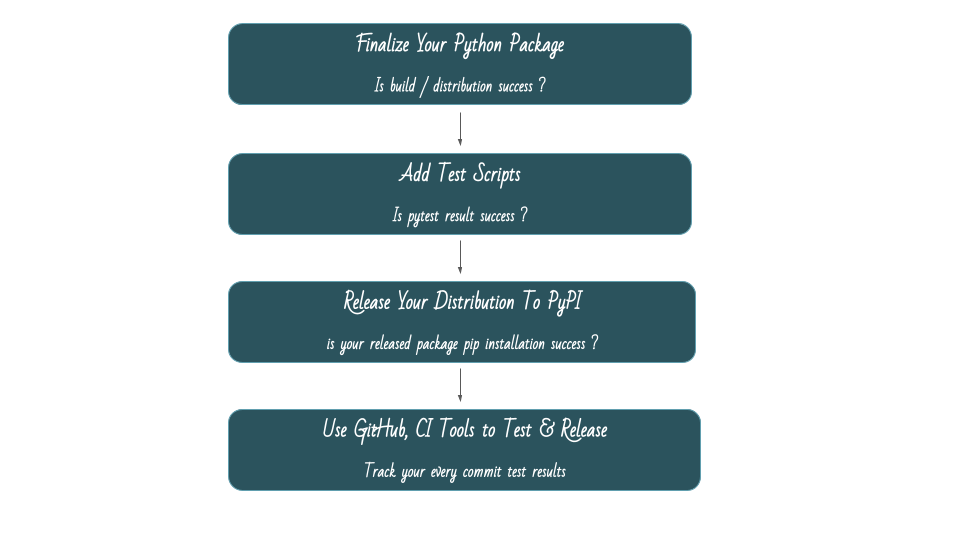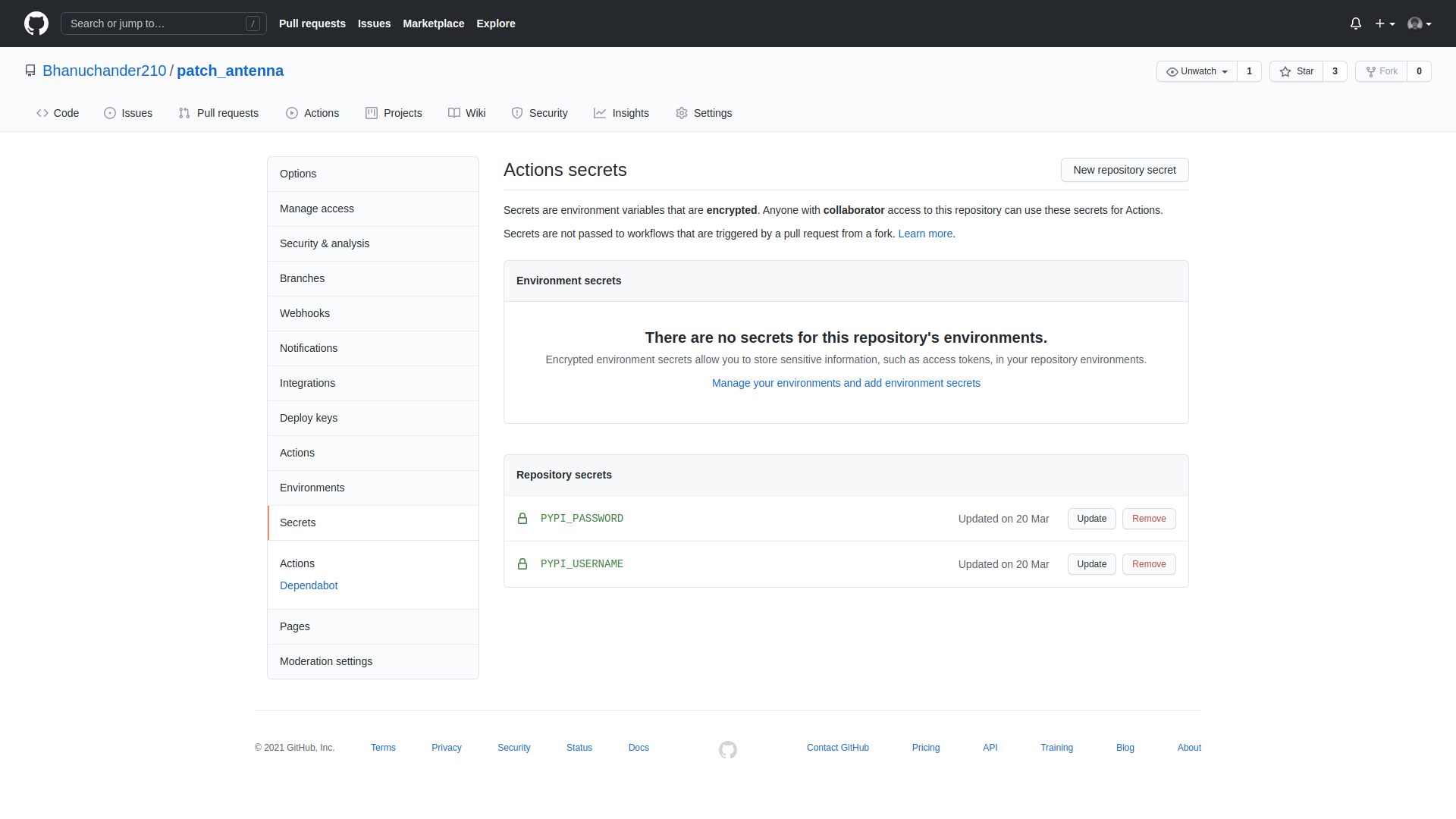Contents
- Overview
- Step 1: Finalize your python package
- Step 2: Add test scripts
- Step 3: Release the distribution to PyPI
- Step 4: Use GitHub and CI Tools
- Reference
Overview
In this post, I will try to share my observations and best practices to publish a python package. The four simple steps mentioned below will help you to implement a systematic approach and make your publishing work easy.

Step 1 : Finalize your python package
Yes. This also a step and the first one to be done. In this step you need to check some plenty of points and also some post development points such as,
- Check whether all the facilities in our checklist covered.
- Find and remove dead codes if available in current version.
- Update the readme and other notes if present.
- Add TODOs or future plant comments as mentioned in your readme.
- Please review your once again from end to end, sure you will find some enhancement.
Step 2 : Add test scripts
Adding test scripts will make the package more proper and will help you to find one or more cases to be covered. Also, python package : pytest offers test facility to check your package with the test cases. Whenever you add new facility or made changes, try to add the respective test case.
PyTest
Step 3 : Release the distribution to PyPI
I suggest to read the post from reference : How to Publish an Open-Source Python Package to PyPI. However here the summarized points as steps are added,
- Use the link : https://pypi.org/account/register/ to register in PyPI if not yet done.
- Configuring the package using setup.py which consists all info about your package.
- Build and test your project using python package twine. The commands are,
python setup.py sdist bdist_wheel
twine check dist/*
- To publish your package to PyPI, use the command,
twine upload dist/*
- As there are other packages also mentioned on that post. If wish, have a look at Poetry, Flit, Cookiecutter.
Step 4 : Use GitHub and CI Tools
In this step, The usages of GitHub and Travis CI in publishing python packages are explained.
- The Travis CI is used to verify the build passing status and test results of the latest commit.
- GitHub workflows facility is used to publish the package to PyPI.
I have added these both facilities in my github repo patch_antenna. Let us take this repo as an example for the further discussion.
Travis CI
Integrating Travis CI to your github repo is done by adding a .travis.yml file in the same repo. I have added the steps what are all need to be done to test my package in that yaml file like shown below.
.travis.yml
sudo: false
language: python
python:
- "3.7"
before_install:
- pip3 install scipy
- python3 setup.py install
script: pytest
notifications:
email: false
Once this added to your github repo, you need to enable travis ci in github authorized Applications and also configure which repo need to be used by travis ci in https://travis-ci.com/.
GitHub workflows
GitHub offers workflows facility to do various of our requirements. I am using this facility to publish my python package to PyPI on release based mode like we did it with travis ci.
To avail the facility, a yaml file .github/workflows/python-publish.yml created in the same repo.
python-publish.yml
name: Upload Python Package
on:
release:
types: [created]
jobs:
deploy:
runs-on: ubuntu-latest
steps:
- uses: actions/checkout@v2
- name: Set up Python
uses: actions/setup-python@v2
with:
python-version: '3.x'
- name: Install dependencies
run: |
python -m pip install --upgrade pip
pip install setuptools wheel twine
- name: Build and publish
env:
TWINE_USERNAME: ${{ secrets.PYPI_USERNAME }}
TWINE_PASSWORD: ${{ secrets.PYPI_PASSWORD }}
run: |
python setup.py sdist bdist_wheel
twine upload dist/*
The user name and password which asked by twine can be added as secrets in the same repository settings > secrets like shown below image.
Screenshot

Once you done all the above points, follow these steps as best practices to publish you package.
- Do your regular commits with test cases and also verify the build status using travis ci.
- Keep update readme and todo notes in your repo to track your goals.
- Once you feel done with the facilities and also build passes, Make a release on github with respected version and release notes. (Also don’t forget to add the latest version in setup.py)
- This will release new package version as you mentioned in setup.py file using github workflows and also you can check with workflow results in actions page.

Related Posts
Reality Of One Shot Learning For Face Recognition